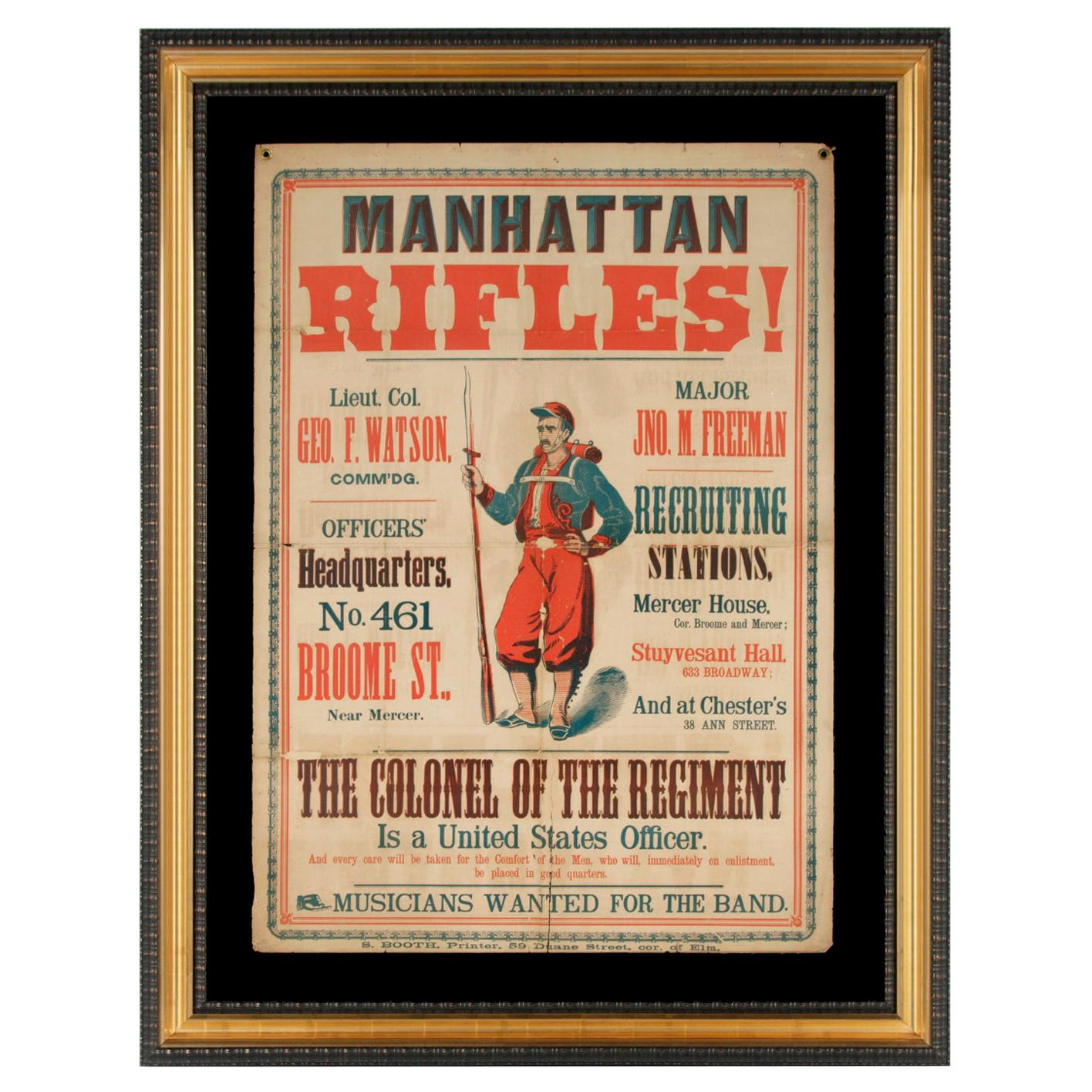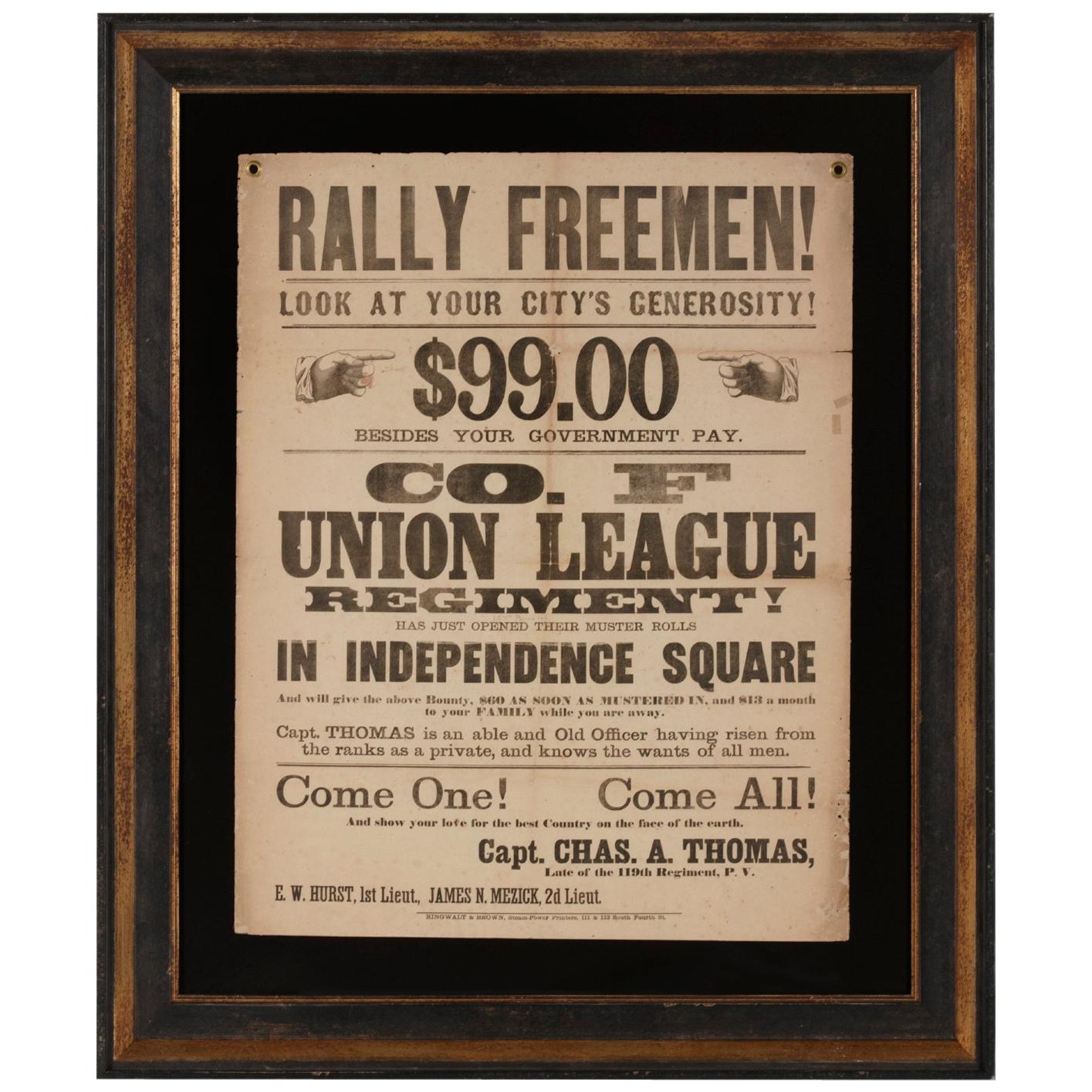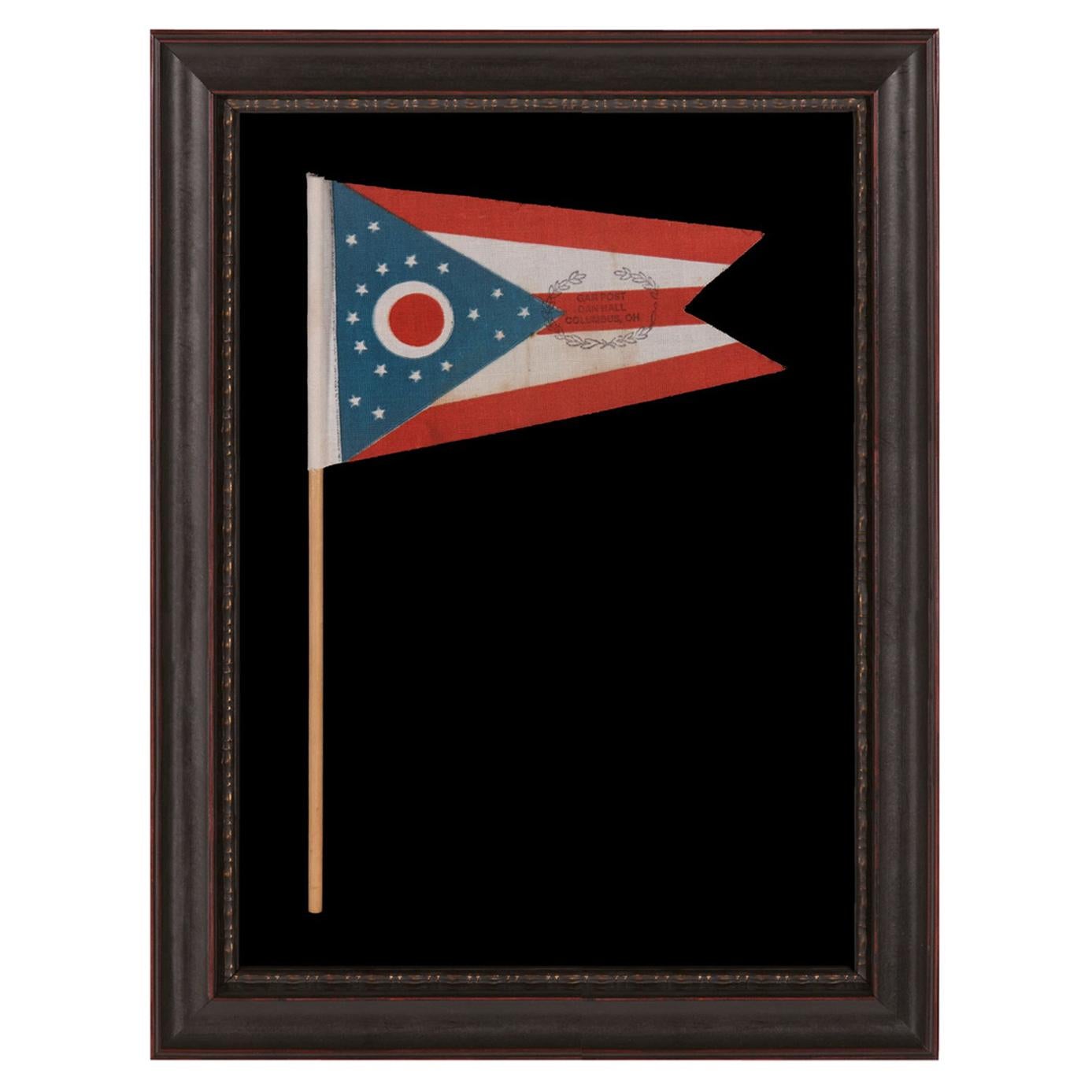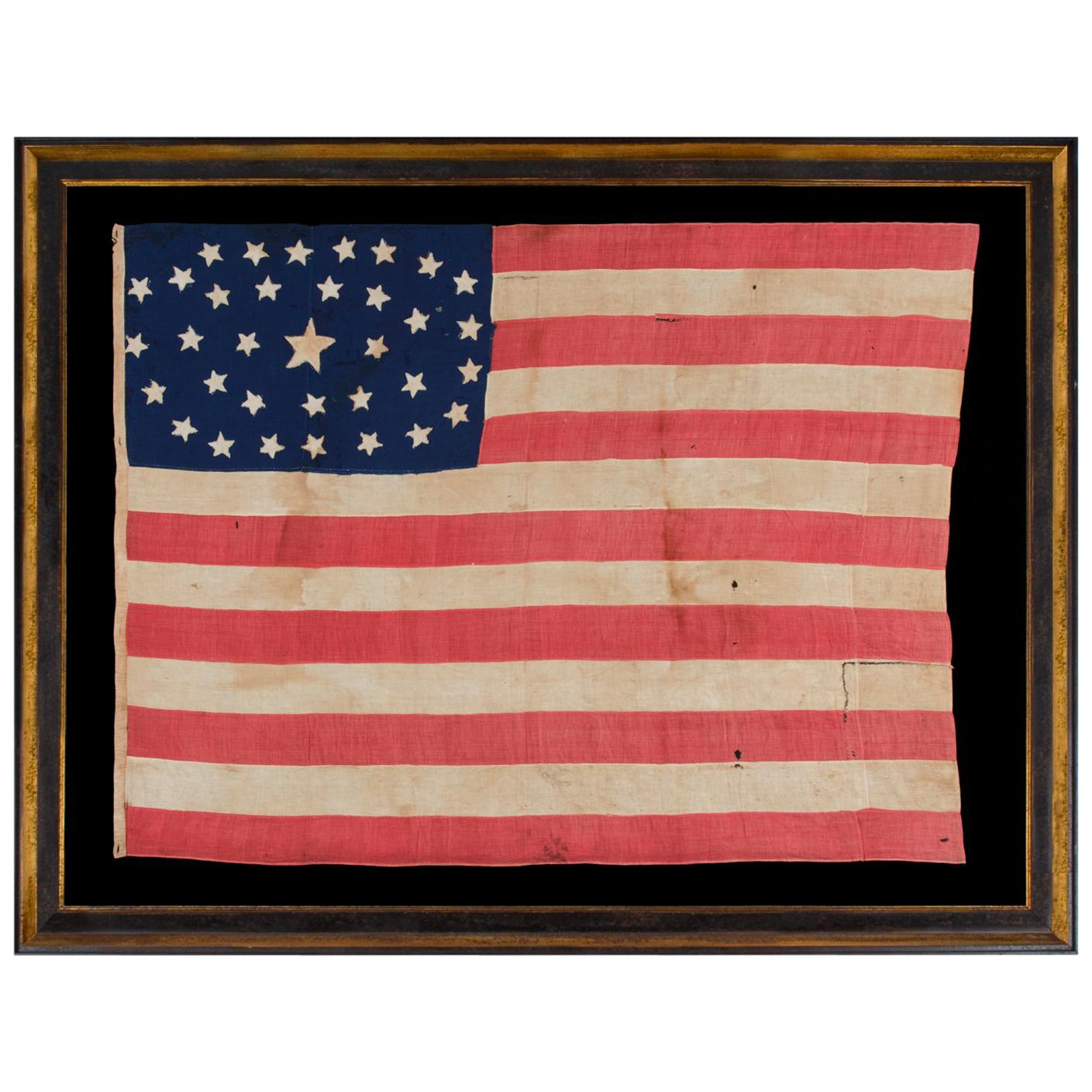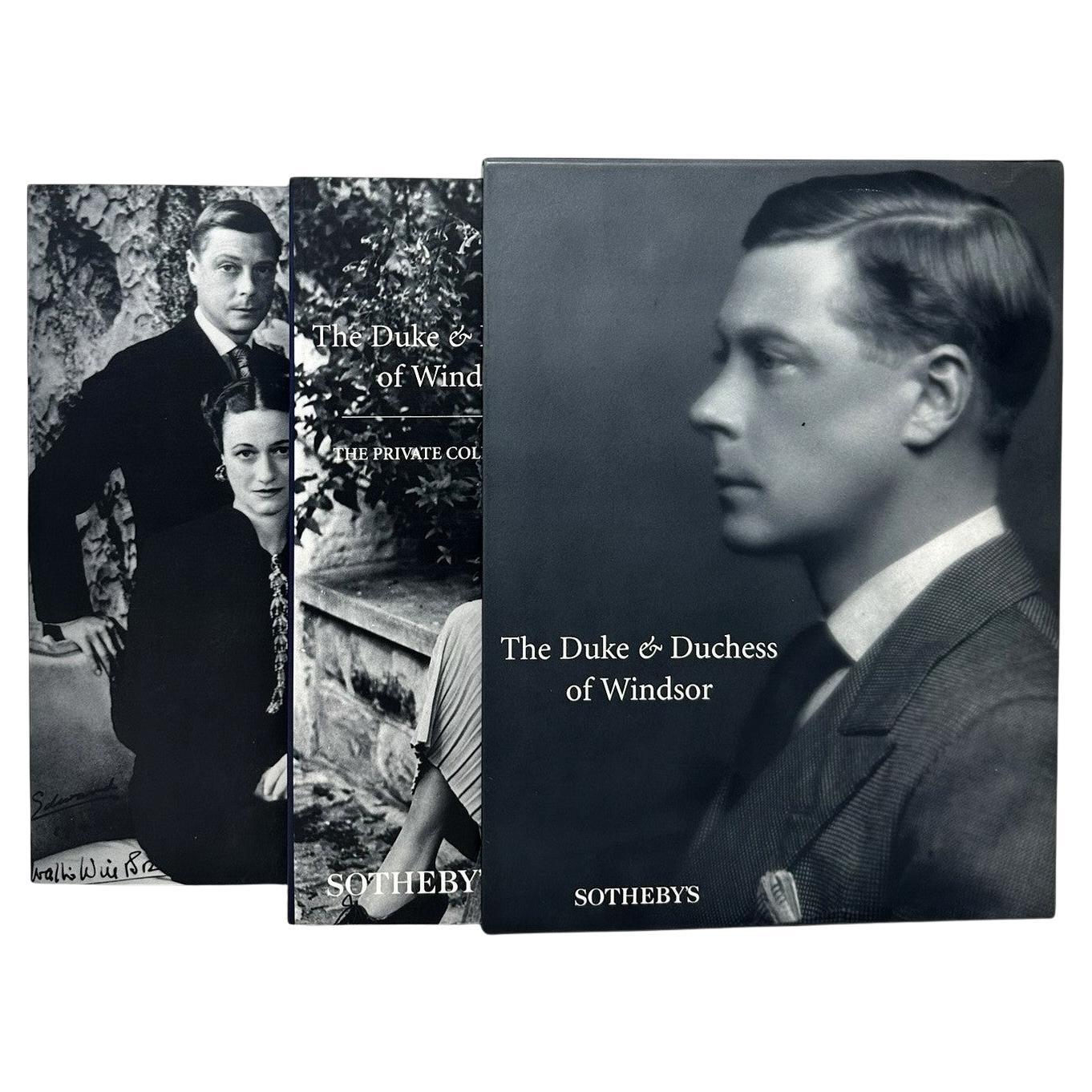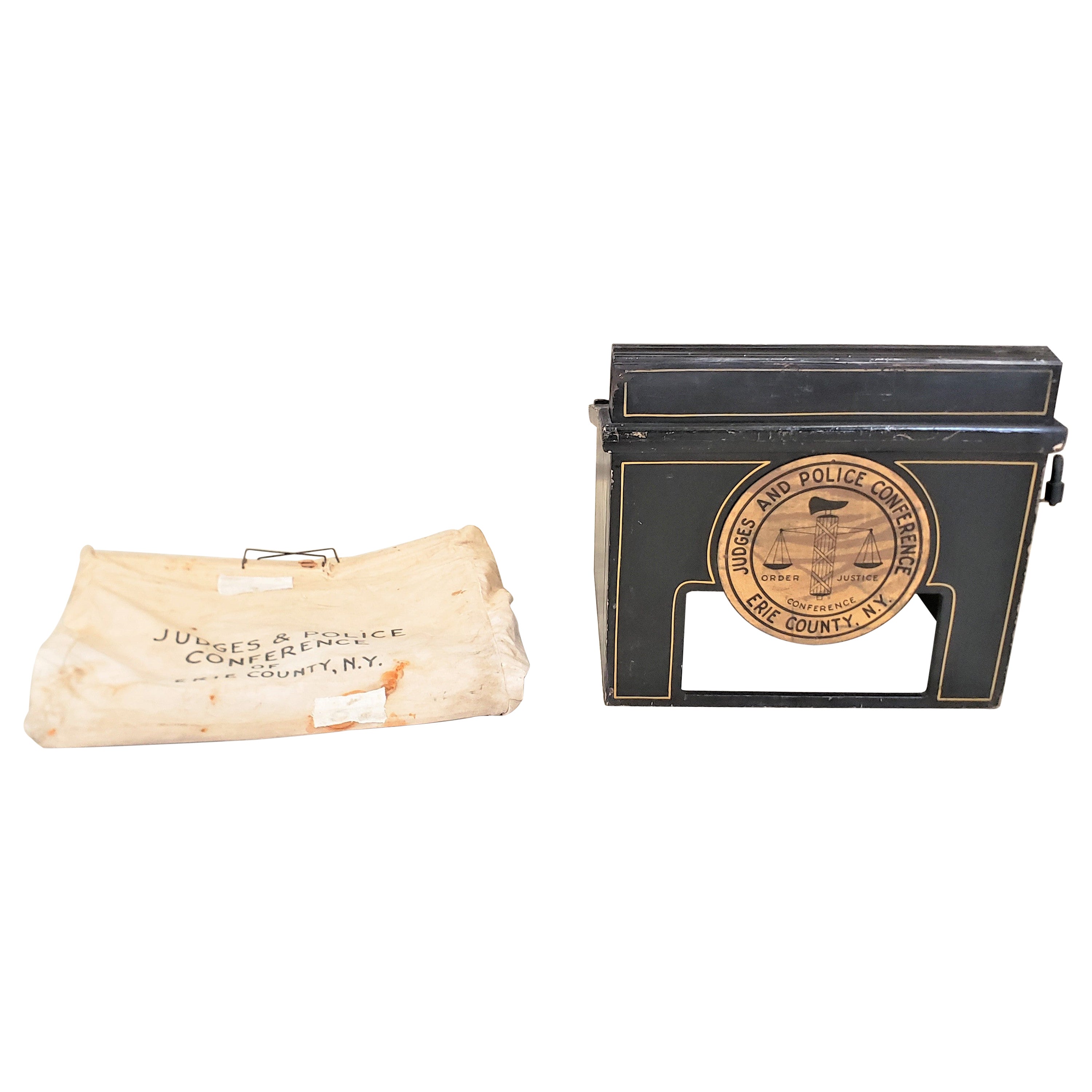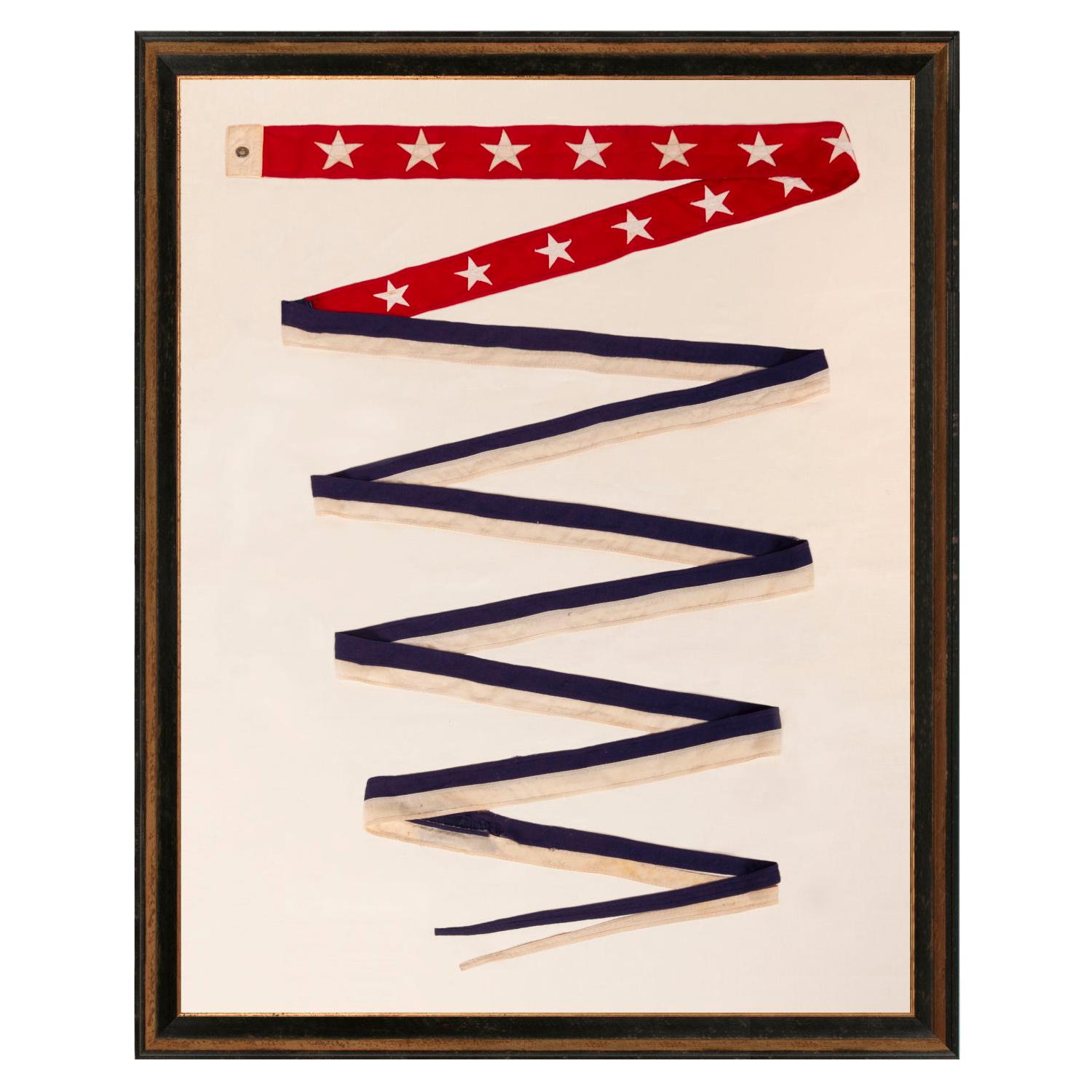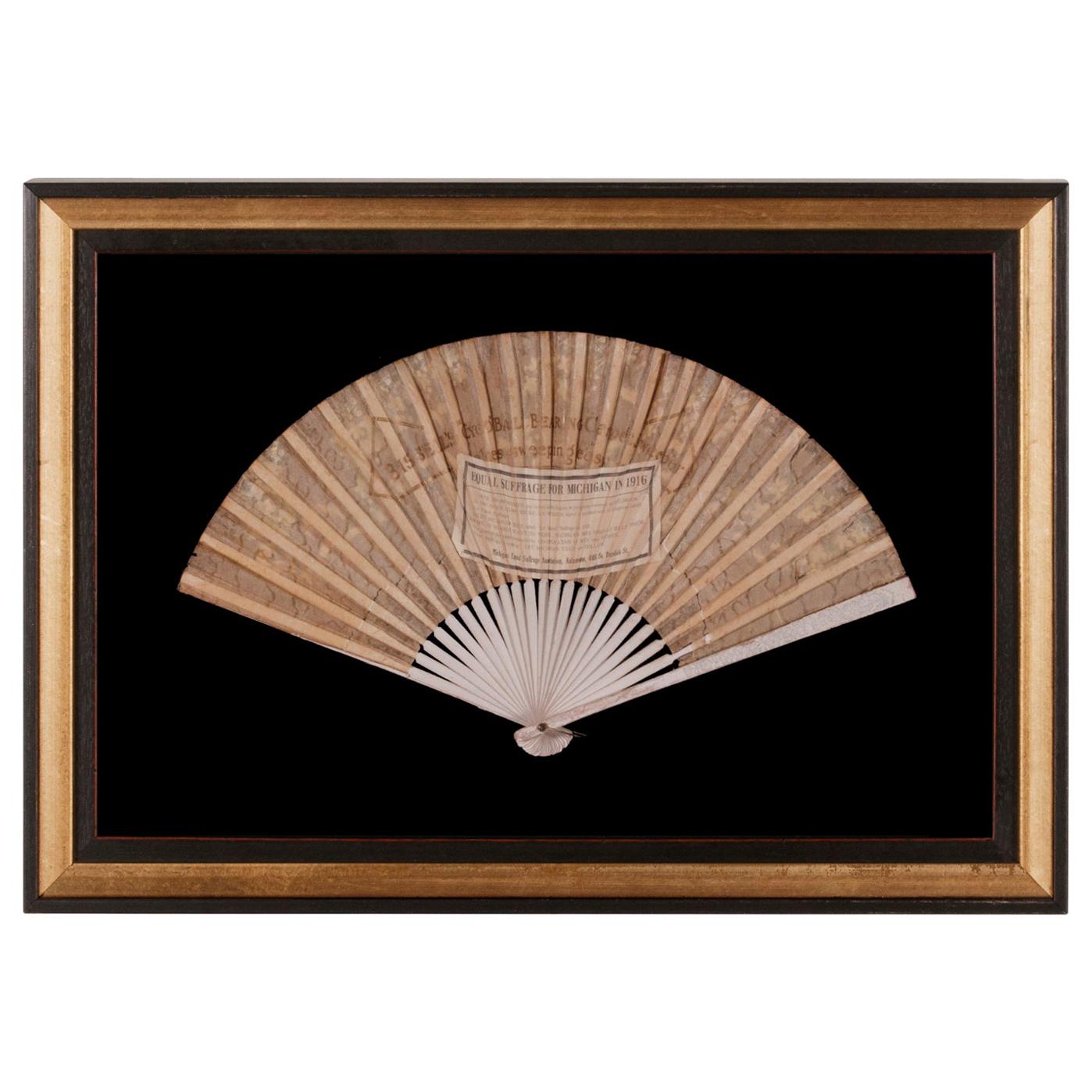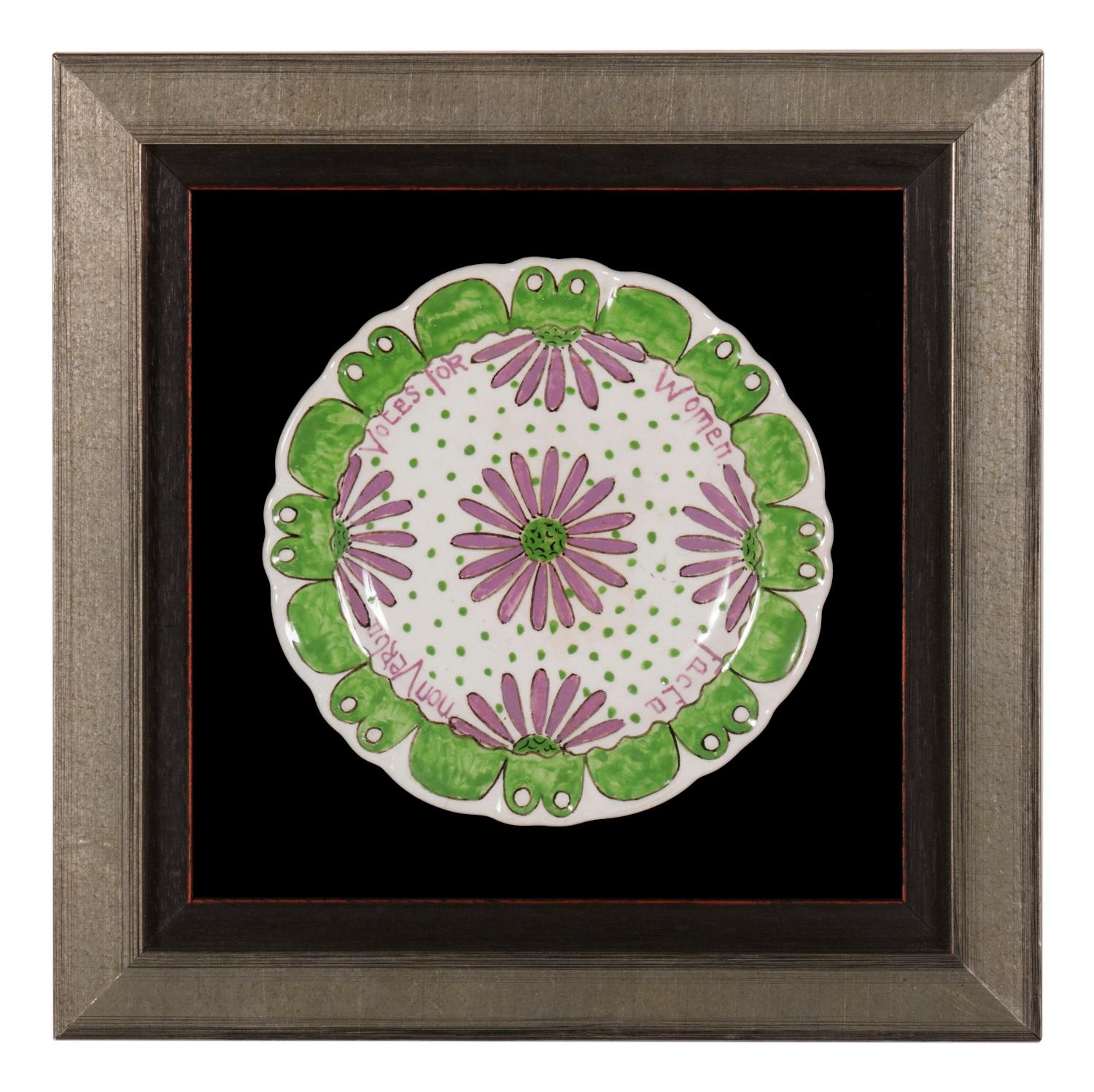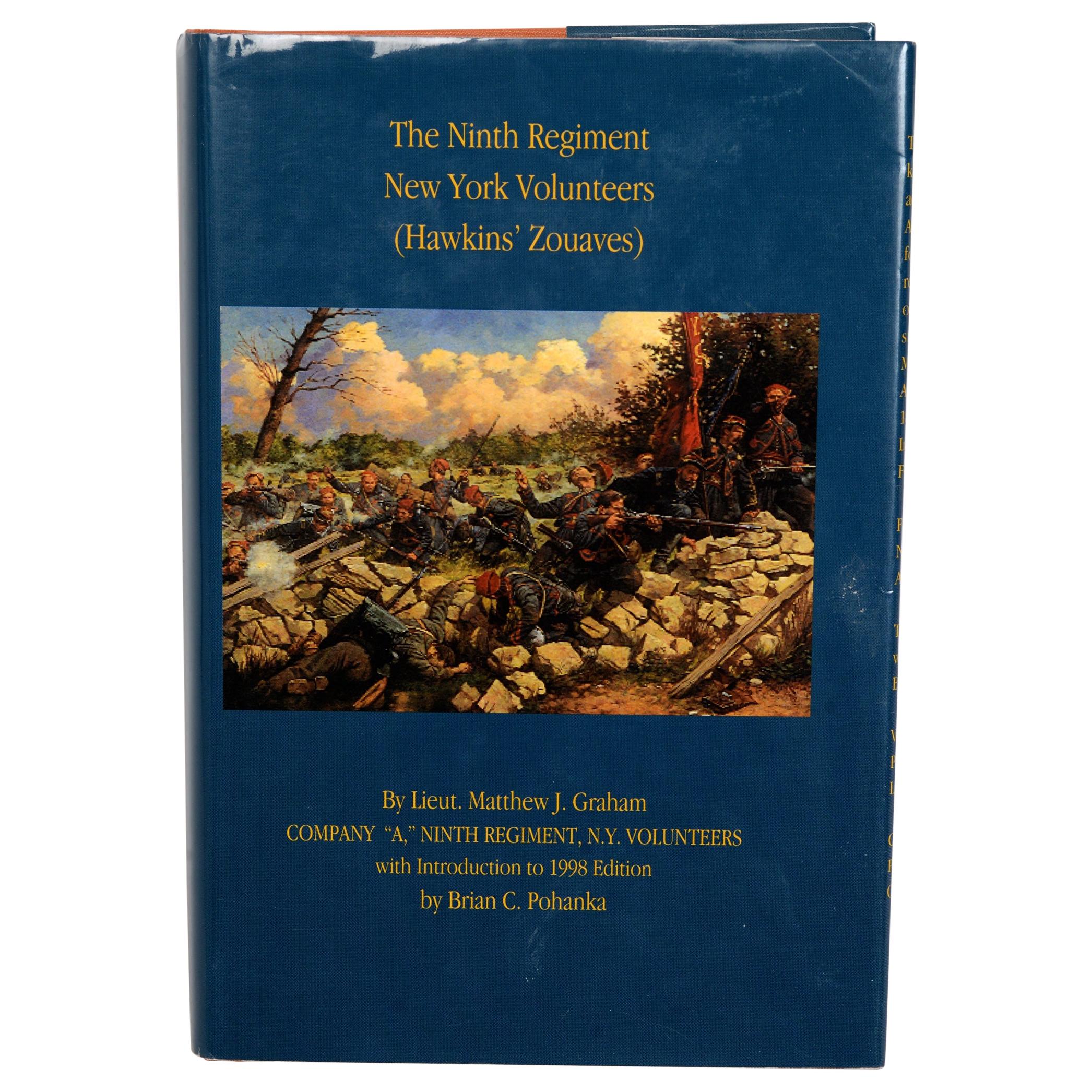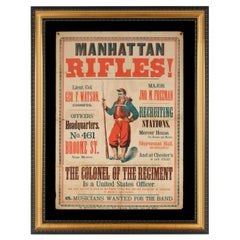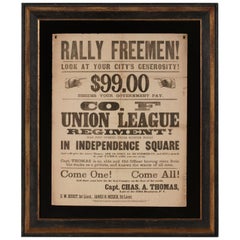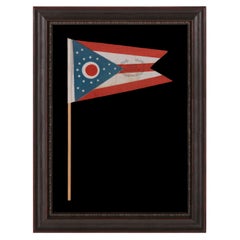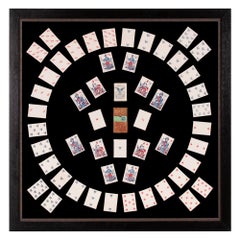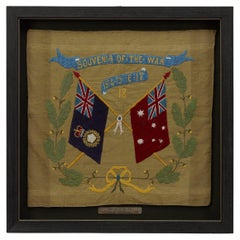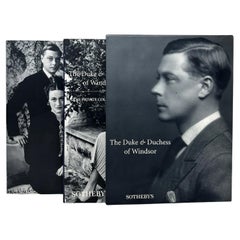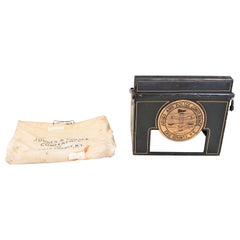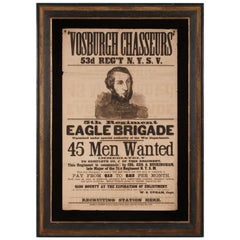
Large Civil War recruitment Broadside for the 53rd New York Volunteer Infantry
View Similar Items
Want more images or videos?
Request additional images or videos from the seller
1 of 7
Large Civil War recruitment Broadside for the 53rd New York Volunteer Infantry
$14,500List Price
About the Item
- Dimensions:Height: 48.5 in (123.19 cm)Width: 34.5 in (87.63 cm)Depth: 2.5 in (6.35 cm)
- Materials and Techniques:
- Place of Origin:
- Period:
- Date of Manufacture:1862
- Condition:See Item Description.
- Seller Location:York County, PA
- Reference Number:Seller: pat-4091stDibs: LU849718481632
About the Seller
5.0
Recognized Seller
These prestigious sellers are industry leaders and represent the highest echelon for item quality and design.
Established in 1991
1stDibs seller since 2008
70 sales on 1stDibs
Typical response time: 1 to 2 days
Authenticity Guarantee
In the unlikely event there’s an issue with an item’s authenticity, contact us within 1 year for a full refund. DetailsMoney-Back Guarantee
If your item is not as described, is damaged in transit, or does not arrive, contact us within 7 days for a full refund. Details24-Hour Cancellation
You have a 24-hour grace period in which to reconsider your purchase, with no questions asked.Vetted Professional Sellers
Our world-class sellers must adhere to strict standards for service and quality, maintaining the integrity of our listings.Price-Match Guarantee
If you find that a seller listed the same item for a lower price elsewhere, we’ll match it.Trusted Global Delivery
Our best-in-class carrier network provides specialized shipping options worldwide, including custom delivery.More From This Seller
View AllColorful Civil War Recruitment Broadside for the "Manhattan Rifles"
Located in York County, PA
MASSIVE & COLORFUL CIVIL WAR RECRUITMENT BROADSIDE FOR THE "MANHATTAN RIFLES,” WHICH MUSTERED INTO 43RD AND THE 57TH NEW YORK INFANTRY DIVISIONS ...
Category
Antique 1860s American Political and Patriotic Memorabilia
Materials
Paper
Price Upon Request
"Rally Freemen!..." Civil War Recruitment Broadside
Located in York County, PA
"RALLY FREEMEN! …COME ONE! COME ALL! AND SHOW YOUR LOVE FOR THE BEST COUNTRY ON THE FACE OF THE EARTH." A CIVIL WAR RECRUITMENT BROADSIDE FOR THE...
Category
Antique 1860s American Political and Patriotic Memorabilia
Materials
Paper
Ohio State Parade Flag with a Civil War Veterans Overprint
Located in York County, PA
OHIO STATE FLAG WITH CIVIL WAR VETERANS' OVERPRINT FROM THE GRAND ARMY OF THE REPUBLIC POST IN COLUMBUS, MADE IN MOURNING OF THE 1925 PASSING OF NATIONAL G.A.R. COMMANDER IN CHIEF DANIEL M. HALL, WHO ALSO SERVED AS COMMANDER OF THE OHIO DEPARTMENT OF THE G.A.R., AS WELL AS THE LOCAL CHAPTER
Flag of the State of Ohio, printed on oilcloth-like cotton, affixed to its original wooden staff. Made for Civil War veteran's use, the flag bears a stamped overprint in the striped field that consists of an open wreath of laurel branches, inside which is the following text: “GAR [Grand Army of the Republic] Post, Dan Hall, Columbus, OH”.
Born on October 20th, 1842, Daniel M. Hall enlisted with the Union Army as a Private at the age of 18 on August 25th, 1861. On October 8th of that year he mustered into the Co. H of the 2nd Ohio Cavalry. Discharged for disability on June 28th, 1862, he reenlisted approximately 17 months later, on November 11th, 1863, and mustered into Co. F of the 12th Ohio Cavalry at Camp Cleveland. He was at some point promoted to the rank of Sergeant, and, on February 21st, 1864, to the rank of Corporal. He mustered out at Nashville on November 14th, 1865.
Hall mustered into the Hamlin Post of the Ohio G.A.R. on May 23rd, 1883. He would go on to serve not only as Commander of the Dept. of Ohio for the organization, but as National Commander of the entire Grand Army of the Republic.
The Grand Army of the Republic was the primary veterans association for Union Civil War soldiers. Founded in 1866, its members dressed up in Civil War uniforms, attended parades and reunions, and the organization was somewhat more fraternal in nature than today’s VFW or American Foreign Legion.
Flags overprinted for the purpose of advertising are a specialized form in American flag collecting. A flag with a basic G.A.R. overprint is the most common type. This might be accompanied by a post number and a date. More elaborate the overprints are more highly desired, such as this one, which is the only variation I know of that honors a particular person who was not the namesake of the chapter itself.
It is of interest to note that a sister variety of 48 star parade flag is known, printed on the same fabric, that bears the same overprint, accompanied by the words: “We Mourn Our Comrade." From the additional text on the 48 star variety, one can extrapolate that the flags were made to mourn the passing of this important leader of Civil War veterans on October 19th, 1925, just one day before his 83rd birthday.
The State Flag of Ohio was designed in 1901 by Cleveland architect John Eisenmann, who designed the Ohio building for the state's exhibition at the Pan American Exposition World's Fair in Buffalo, New York. It was officially adopted by the Ohio legislature on May 19th, 1902. It's elements are centered on a red disc, set against a circular white ground that forms a letter "O." This simultaneously represents a buckeye, the fruit of the state tree and an iconic Ohio symbol. The flag's 5 stripes are said to represent the state's waterways and roads, while the triangular shape of the union is said to illustrate hills and valleys. The presentation of 13 stars along the hoist end, arranged in a semi-circular medallion with two off-set stars above and below, reflects the original 13 colonies. The diamond of stars, towards the fly end. bring the overall count to 17 to reflect Ohio's admission. When the design was adopted by the state legislature, the position of these stars was changed slightly, moving them further around the circle to form a wreath.
Flag expert Whitney Smith, who coined the term Vexillology in the late 1950's (the accepted term for the study of flags), pointed out that the format of the flag itself was reminiscent of Civil War cavalry guidons, carried by Ohio regiments throughout the state. These were of swallowtail form, though with 13 stripes, all horizontal and 90 degrees to the hoist. Most often these had circular star patterns around an open center, which makes them even more similar to the Ohio flag...
Category
Vintage 1920s American Political and Patriotic Memorabilia
Materials
Cotton
1862 Civil War Playing Cards with Stars, Flag, Sheilds and Eagles
Located in York County, PA
1862 Civil War playing cards with stars, flags, shields, & eagles, and face cards illustrating civil war officers and lady, Columbia, ca 1862, Benjamin Hitchcock, New York
1862 Civil War playing cards with suits represented by stars, flags, shields, & eagles, in lieu of the traditional French suits of hearts, diamonds, clubs, and spades. The face cards feature Union Army officers and Lady Columbia [a.k.a. Lady Liberty, Goddess of Liberty]. Entitled “Union Playing Cards,” two versions of this deck were produced in New York by Benjamin W. Hitchcock’s “American Card Company.” This is the earlier of the two. The other was released in 1863.
There are 52 cards in total with the ace of spades doubling as the title card, as was often the case during the 19th century. The telescoping box...
Category
Antique 1860s American Political and Patriotic Memorabilia
Materials
Paper
Price Upon Request
34 Stars in an Outstanding Oval Medallion Configuration, Civil War Period
Located in York County, PA
34 STARS IN AN OUTSTANDING OVAL MEDALLION CONFIGURATION, ON A NARROW CANTON THAT RESTS ON THE 6TH STRIPE, ON A HOMEMADE, ANTIQUE AMERICAN FLAG OF THE CIVIL WAR PERIOD, ENTIRELY HAND-...
Category
Antique 1860s American Political and Patriotic Memorabilia
Materials
Cotton
"Equal suffrage for Michigan in 1916" Advertising Fan for the Bissell Company
Located in York County, PA
"EQUAL SUFFRAGE FOR MICHIGAN IN 1916," ADVERTISING FAN FOR THE BISSELL 'CYCO BALL BEARING CARPET SWEEPER,' COMMISSIONED BY ANNA BISSELL (1846-1934), AMERICA'S FIRST FEMALE CEO
Oriental-made, twill-woven silk fan with gilt lettering that reads : "Bissell's 'Cyco Ball Bearing Carpet Sweeper' makes sweeping easy," set within an interesting, open, geometric design. A purposefully curved, paper label beneath was applied by the "Michigan Equal Suffrage Association, Kalamazoo, 405 So. Burdick St.," whose byline is along the bottom. On it, a terrific message reads:
"OVER 100,000 WOMEN pay taxes in Michigan on property assessed at $177,596,938. In 1910 OVER 175,000 MICHIGAN WOMEN signed a petition sent to Congress asking for Equal Suffrage. 247,373 MICHIGAN MEN voted...
Category
Vintage 1910s American Political and Patriotic Memorabilia
Materials
Silk
You May Also Like
Souvenir of the War 1914-15-16-17-18 Banner
Located in Colorado Springs, CO
Presented is a stunning textile banner from the first World War, dating to 1918. The square tan cotton cloth is embroidered with two crossed flags, the ...
Category
Vintage 1910s Australian Political and Patriotic Memorabilia
Materials
Cotton
Duke & Duchess of Windsor Sotheby's New York Memorabilia Auction Catalogue Book
Located in Dublin, Ireland
This is a two-volume boxed set of sale catalogues each with 550 pages which were produced by Sotheby's Auction House in New York in 1997 for the disposal of the effects of the Duke a...
Category
20th Century British Modern Books
Materials
Paper
Erie County New York Judges & Police Conference Portable Lecturn or Podium & Bag
Located in Hamilton, Ontario
The maker of this lecturn is unknown, but presumed to have originated from the United States and date to approximately 1965. The podium is composed of pine boards and playwood with h...
Category
Mid-20th Century American Mid-Century Modern Historical Memorabilia
Materials
Pine
The Ninth Regiment New York Volunteers ‘Hawkins' Zouaves’ by Matthew J. Graham
Located in valatie, NY
The Ninth Regiment New York Volunteers (Hawkins' Zouaves) by Matthew J. Graham. Ironclad Pub, 1998. With an Introduction by Brian Pohanka - 634pp of Rosters. Hawkins' Zouaves spearheaded the Union assault into Sharpsburg during the battle of Antietam, advancing farther than any other unit on this bloodiest single day in American military history that ended in a draw, but the Confederate retreat gave President Abraham Lincoln the “victory” he desired before issuing the preliminary Emancipation Proclamation...
Category
1990s American Books
Materials
Paper
1868 Map of the Upper Part of the Island of Manhattan Above 86th Street
By Wm. Rogers Mfg. Co.
Located in San Francisco, CA
This wonderful piece of New York City history is over 150 years old. It depicts 86th street and above. It was lithographed by WC Rogers and company. It was made to show what was the Battle of Harlem during the Revolutionary war...
Category
Antique 1860s American American Colonial Maps
Materials
Paper
Fathers of the Air Service Authentic Signature Collage, circa 1926-1993
Located in Colorado Springs, CO
Presented is a collage celebrating the men who made an early impact on the formation of America’s Air Service. Complete with signatures by Jimmy Doolittle, Tooey Spaatz, Hap Arnold, ...
Category
Late 20th Century American Historical Memorabilia
Materials
Paper
Recently Viewed
View AllMore Ways To Browse
Wood War Club
Flag Empire
Antique Wood Advertising Sign
Arnold And Son
Charles H Grant
George Baker
Antique Broadside
Madison Square Furniture
George Washington Memorabilia
American Federal Portrait
George Beard
Brock And Co
A Gardner And Son
Grant Wood March
Mark Godwin
Baker Butler
Empire Butler
Antique Bakers Scale
